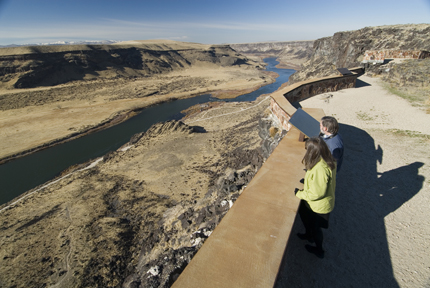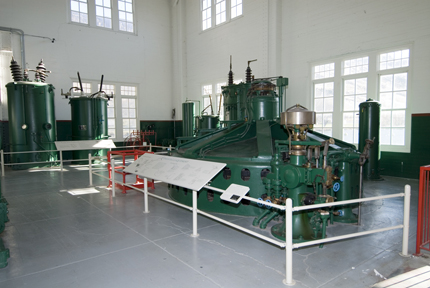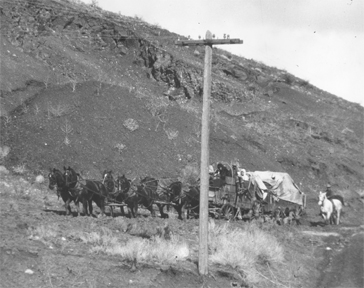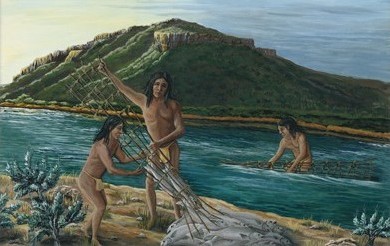Natural
Recognized as the primary byway attraction is the 485,000-acre Birds of Prey National
Conservation Area (NCA) established by Congress in 1993. Managed by the BLM, the
NCA is home to the largest population of nesting raptors in the world.
Geologic
Southwestern Idaho was born of fire and water. Dating back more than fourteen million
years ago, southwestern Idaho set the stage for today’s Yellowstone Park, Wyoming.
Southwestern Idaho was the entrance gate ushering in the Yellowstone Hotspot—a deep
underground reservoir of molten rock. As the hotspot marched across southern Idaho
on its way to Wyoming, it left behind a legacy of volcanoes, lava flows, and a rugged
landscape that today defines the lower 1/3 of the state. Today, the Snake River
Canyon reads as an “open book” to the epic volcanic forces that shaped southern
Idaho. Many visitors find the canyon along the byway a fascinating geologic time
machine.

About 15,000 years ago, southern Idaho once again was the site of an epic event
as one of the largest floods in geologic history tore through the Snake River Plain.
Ancient Lake Bonneville larger than today’s Lake Michigan, occupied three states:
Utah, Idaho and parts of Nevada. A natural dam located at Red Rock Pass, near Pocatello,
Idaho suddenly gave way. Known as the Bonneville Flood, a torrent of water raced
to the Pacific Ocean. The massive volume of water, which reached speeds of hundreds
of miles per hour, reshaped the entire Snake River Canyon. Evidence of the flood
is still visible today along the byway. The most vivid signs are the large boulders
some weighing hundreds of tons scattered as river gravel in the area that is Celebration
Park in Canyon County.
Recent History

Swan Falls Dam, the first hydro-electric project on the Snake River dates back to
1901. The dam was constructed to provide electricity to the region’s early silver
and gold mines in the Owyhee Mountains. Although the type of electricity that was
generated by Swan Falls was still in its infancy, Swan Falls nevertheless became
an historic proving ground establishing the beginnings of alternating current electricity.
The same three-phase alternating current electricity generated at Swan Falls in
those early pioneering days became the standard that is in use throughout the world
today. Idaho Power has converted the old powerhouse, which is on the National Register
of Historic Places, into a self-guided interpretative museum featuring most of the
original turn-of-the-century electrical equipment. The Western Heritage Foundation
is currently partnering with Idaho Power to establish educational programs at the
old powerhouse where school age children have an historic place to learn more about
early Idaho history, and to experience the early beginnings of the electrical age.
Pioneer History

Settlement in southwestern Idaho dates back to when Idaho was a vast territory.
With the discovery of gold and silver in the Owyhee Mountains during 1865, miners
and fortune seekers by the hundreds flocked to the town of Silver City. Silver City
quickly grew becoming one of Idaho’s richest gold and silver producers. Ranchers
and farmers settled in the valley to provide food for the new populations in Silver
City and Boise. The arrival of the Oregon Short Line Railroad signaled the beginning
of new growth and wealth in the infant Treasure Valley. Towns of Kuna, Mora, Melba,
and Murphy became shipping hubs along the freight and stagecoach route between Silver
City and Boise known today as the Silver Trail.
Much of southwestern Idaho’s frontier history is still visible today. The Owyhee
County Historical Society Museum and Library in Murphy, Idaho has on display Silver
City’s mining history such as pictures and artifacts, along with pioneer history
of the Silver Trail, and Owyhee County.
Ancient History

Cultural history along the byway dates back more than 15,000 years when early migratory
Euro-American Peoples occupied southwestern Idaho. Evidence of their habitation
is still visible in many places today as petroglyphs—ancient rock artwork found
along the Snake River Canyon and in Celebration Park. To aid in interpretation of
early Native American history, and to help drive a deeper understanding of Idaho’s
unique cultural heritage, the Western Heritage Foundation is working in concert
with the Canyon County Parks, and the Desert Studies Institute (DSI). The DSI, established
in 1997, is a cooperative program between the Department of Anthropology at Boise
State University and Celebration Park, which is operated by Canyon County Parks,
Recreation and Waterways. Each year, the Desert Studies Institute provides a broad
range of academic offerings of interest and value to students, teaching professionals,
and Idaho’s citizens.